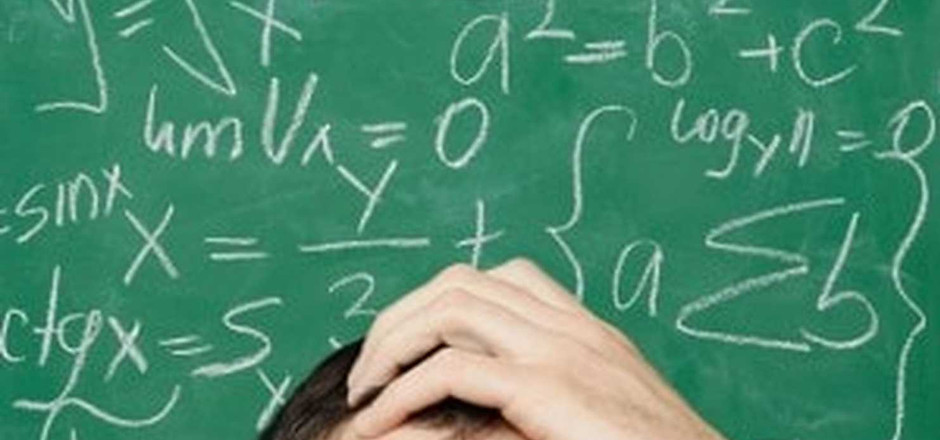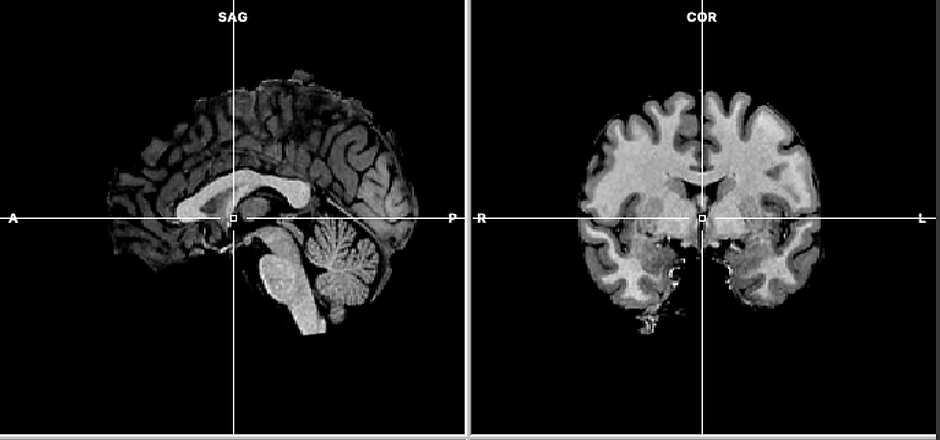RESEARCH

WHY ARE SOME CHILDREN BETTER AT MATH THAN OTHERS?
There are large individual differences in numeracy. On average, there is a seven-year span in ability within a single elementary classroom (Cockcroft, 1982). Of particular concern is the finding that children who enter school with poor numeracy skills do not catch up (Aunola et al., 2004), likely due to the lack of identification and intervention tools.
As part of our research program, we are developing tools to assess and predict children’s numeracy skills early on, in kindergarten and first grade. We have identified precursor abilities to numeracy and, using patterns of strengths and weaknesses in these abilities, we are able to predict which children will struggle to gain numeracy skills, and even which skills they will struggle with. The ultimate goal of this research is to create individualized interventions.
This line of research was funded by (1) a Social Sciences and Humanities Research Council (SSHRC) grant for the Count Me In Project (www.carleton.ca/cmi). Count Me In was a large-scale, multi-site, longitudinal research study investigating predictors of mathematical development in children from Kindergarten to Grade 5 (N = 500) and (2) a series of three research grants from King’s University College for Improving Numeracy Outcomes in Elementary School Children, a longitudinal research project investigating predictors of mathematical development in children from Kindergarten to Grade 3, and (3) a research grant from King’s University College for Development of an Early-Numeracy Screening Tool.
Key findings:
There are multiple pathways to math success (LeFevre et al., 2010; Penner, Buckland & Moes, 2019). Children’s linguistic, quantitative, and visuo-spatial working memory skills each contribute independently to the development of mathematical skills. As a result, children may be able to compensate for a weakness in one area with a relative strength in another. This finding of multiple pathways to success has strong implications for math education and the development of math interventions.
Currently, few evidence-based early screening tools exist to identify children at risk of math difficulties and, once identified, there are even fewer interventions that are shown to be effective (Penner, Buckland & Moes, 2019).
Researchers use a variety of different performance measures for key numerical tasks including number comparison and enumeration. Our research has shown that these different measures are not indexing the same construct/ability within a given task and, thus, researchers need to be thoughtful about their choices, especially in screening tools (Penner et al., 2019; Penner-Wilger et al., 2017).
A small set of cognitive predictors can be used to identify kindergarten children who will struggle to learn mathematics: symbolic number comparison (e.g., Which is more? 35), visuo-spatial working memory (e.g., recreating a sequence), phonemic awareness (), and receptive vocabulary (Penner & Waring, 2018). Performance on these four tasks can account for 41% of variability in children’s math scores. Test outcomes can be used for early identification of students in need of math interventions and to more specifically guide the intervention design.
Next steps:
Development of a diagnostic screening tool, MathPath, that teachers can use to identify kindergarten children at risk for math difficulties for intervention. Two of the three pathways (quantitative and working memory) have currently been implemented in our easy to use application. We are working on adding the language pathway tasks and will, in the future, be testing the effectiveness of MathPath in a longitudinal efficacy study following the rigorous criteria outlined in (Penner, Buckland, & Moes, 2019).
Find out more:
LeFevre, J., Fast, L., Skwarchuk, S. L., Smith-Chant, B. L., Bisanz, J., Kamawar, D., & Penner-Wilger, M. (2010). Pathways to mathematics: Longitudinal predictors of performance. Child Development, 81, 1753-1767.
https://www.ncbi.nlm.nih.gov/pubmed/21077862
Penner, M., *Buckland, C., & *Moes, M. (2019). Early identification of, and interventions for, kindergarten students at risk for mathematics difficulties. In K. M. Robinson, H. Osana & D. Kotsopoulos (Eds.), Mathematical Learning and Cognition in Early Childhood: Integrating Interdisciplinary Research into Practice (pp. 57-78). New York, NY: Springer.
https://doi.org/10.1007/978-3-030-12895-1_5
Penner, M. & *Waring, R. J. (2018, April). Kindergarten predictors of mathematics: Quantitative, working memory and linguistic skills. Presented at the Mathematical Cognition and Learning Society annual meeting, Oxford, UK.
Penner-Wilger, M., Cecala, A. L., & *Elfers, M. (2017, July). Comparing comparison indices: Assessing the construct and predictive validity of different magnitude comparison measures across formats and age groups. Paper presented at the 39th Annual Conference of the Cognitive Science Society, London, UK.
Penner, M., Cecala, A. L., *Moes, M., & *Waring, R. J. (2019, June). How to index subitizing performance: Comparing the concurrent validity of individual subitizing range and subitizing slope measures in predicting kindergarten numeracy. Presented at the Canadian Society for Brain, Behaviour, & Cognitive Science annual meeting, Ottawa, ON.

WHY ARE SOME ADULTS BETTER AT MATH THAN OTHERS?
Poor numeracy is a serious concern, as numeracy skills are at least as important as literacy skills for job outcomes (Bynner & Parsons, 1997). University students’ levels of calculation fluency and conceptual understanding of mathematics have declined significantly. As part of our research program, we are investigating individual differences in university students’ numeracy skills, particularly differences in the mental representations and processes students use to solve arithmetic problems. Our research shows differences in how more- and less-skilled students represent arithmetic operations, and in the solution strategies they use to solve problems. This research has implications for the development of math pedagogy, especially for how operations are conceptually introduced.
This line of research was funded by a Natural Sciences and Engineering Research Council (NSERC) Julie Payette Award and a Canada Graduate Scholarship.
Key findings:
The calculation fluency of Canadian undergraduates has declined by 20% in the past decade (LeFevre, Penner-Wilger, et al., 2014). Thus, high-school and university instructors cannot expect students to be comfortable solving even simple arithmetic problems ‘in their heads’.
There is evidence to suggest that this decline may be the result of the introduction of calculators in elementary schools (LeFevre, Penner-Wilger, et al., 2014). Our findings suggest that calculators are necessary for basic computations, potentially impeding students’ understanding by diverting their attention from the conceptual focus of lessons.
More-skilled university students tend to represent arithmetic facts in a verbal code (e.g., “six plus two is eight”) and have memorized the basic facts. Less-skilled students tend to represent basic facts spatially, as movement along a mental number line and use a variety of strategies to solve problems, such as counting (e.g., 6+2= six, seven, eight; Penner-Wilger et al., 2011).
Next steps:
Designing and testing a diagnostic tool for university math students. In collaboration with Joseph Turnbull we have developed and are testing the power of a diagnostic math test, along with existing measures of math anxiety and test anxiety, to predict student success in first-year calculus courses. Our preliminary analyses show that 37-40% of variability in final grades can be accounted for by the diagnostics; we are currently completing more rigorous measures of diagnostic accuracy (i.e., sensitivity and specificity; Turnbull et al., in preparation).
Find out more:
LeFevre, J., Penner-Wilger, M., Pyke, A., Shanahan, T., Deslauriers, W. A., Trbovich, P., & Roberts, M. A. (2014). Putting two and two together: Declines in arithmetic fluency among young Canadian adults. Carleton University Cognitive Science Technical Report 2014-01. URL http://www.carleton.ca/ics/TechReports.
Penner-Wilger, M., Landy, D. H., *Zhang, X., & *Weitzer, A. (2011). Going through the motions: Skill differences in the representation of arithmetic operations. Proceedings of the 33rd Annual Cognitive Science Society. Austin, TX: Cognitive Science Society.
Turnbull, J., *Moes, M., Penner, M., Meredith, D., & Lydia, L. (2019). Mathematics learning of undergraduate students. Manuscript in preparation.

WHAT ARE THE BUILDING BLOCKS OF OUR REPRESENTATION OF NUMBER?
Our ability to represent number is built upon two precursors: the ability to enumerate small sets without counting, or subitizing, and the ability to mentally represent one’s fingers, or finger gnosis (Butterworth, 1999). As part of our research program, we are investigating developmental and evolutionary precursors to numerical representation. Our longitudinal research supports a relation between subitizing, finger gnosis, and numeracy. We propose that the relation between finger and number representation exists because the two phenomena have overlapping neural substrates, making the relation one example in support of neural reuse (Penner-Wilger & Anderson, 2013). Consistent with this view, research shows activation in the left precentral gyrus for both finger and number representation (Penner-Wilger & Anderson, 2011). This research is significant not just for understanding the building blocks of numerical representations, but also because it serves as a model for a more integrative approach to functional localization in the brain.
This line of research was funded by research grants from King’s University College at Western University.
Key findings:
The relation between finger gnosis and math ability may be the result of redeployment of a neural substrate that supports both finger gnosis and the representation of number, along with a wide variety of other uses (Penner-Wilger & Anderson, 2013).
As an in-principle demonstration, the same computational model (Stewart & Penner-Wilger, 2017; Stewart et al., 2017) performs both number comparison and finger gnosis tasks using the shared functional component identified in Penner-Wilger and Anderson (2011). The model is implemented in artificial spiking neurons using the Neural Engineering Framework (Eliasmith & Anderson, 2003). The model is psychologically plausible, providing a good fit to human performance data (response time and errors).
Next steps:
Meta-analyses of finger gnosis and number comparison imaging data. Our lab has just completed a meta-analysis of imaging data for finger gnosis (Moes, Penner, & Cecala, in preparation), which showed that finger gnosis is associated with increased activation in the left inferior parietal lobule, post- and pre-central gyri. As a next step, using an already conducted meta-analysis for number comparison, we will perform conjunction and contrast analyses to better determine areas of overlap between finger and number representations.
Computational model. The results of the meta-analyses will be used to further elaborate the the computational model of finger and number representation; the Nengo modeling software (nengo.ca) that we are using is the most neurologically-plausible platform available and allows for specification of neuron types, etc. that can be input once regions of overlap have been further specified. The goals of this modeling project are to provide a testable model of the representation of number and to drive further empirical work.
Imaging study. In performing the meta-analysis of finger gnosis, we noted that (1) measures of finger gnosis were often confounded with other cognitive task requirements, and (2) that the baseline tasks used in the subtractions did not cleanly isolate finger gnosis. Thus, we are currently planning our own imaging study examining finger gnosis and number comparison in adults.
Find out more:
*Moes, M., Penner, M., & Cecala, A. L. (2019). Meta-analysis of finger gnosis imaging data using ALE. Manuscript in preparation.
Penner-Wilger, M. & Anderson, M. L. (2013). The relation between finger gnosis and mathematical ability: Why redeployment of neural circuits best explains the finding. Frontiers in Theoretical and Philosophical Psychology, 4, 877.
https://www.ncbi.nlm.nih.gov/pmc/articles/PMC3851991/
Penner-Wilger, M., & Anderson, M. L. (2011). The relation between finger gnosis and mathematical ability: Can we attribute function to cortical structure with cross-domain modeling? Proceedings of the 33rd Annual Cognitive Science Society. Austin, TX: Cognitive Science Society.
https://mindmodeling.org/cogsci2011/papers/0579/paper0579.pdf
Stewart, T. C., Penner-Wilger, M., *Waring, R. J., & Anderson, M. L. (2017). A common neural component for finger gnosis and magnitude comparison. In G. Gunzelmann, A. Howes, T. Tenbrink, & E. J. Davelaar (Eds.), Proceedings of the 39th Annual Conference of the Cognitive Science Society (pp. 1150–1155). Austin, TX: Cognitive Science Society.
https://mindmodeling.org/cogsci2017/papers/0222/paper0222.pdf
Stewart, T. C., & Penner-Wilger, M. (2017). Analysis of a common neural component for finger gnosis and magnitude comparison. Proceedings of the 15th Annual Meeting of the International Conference on Cognitive Modelling.